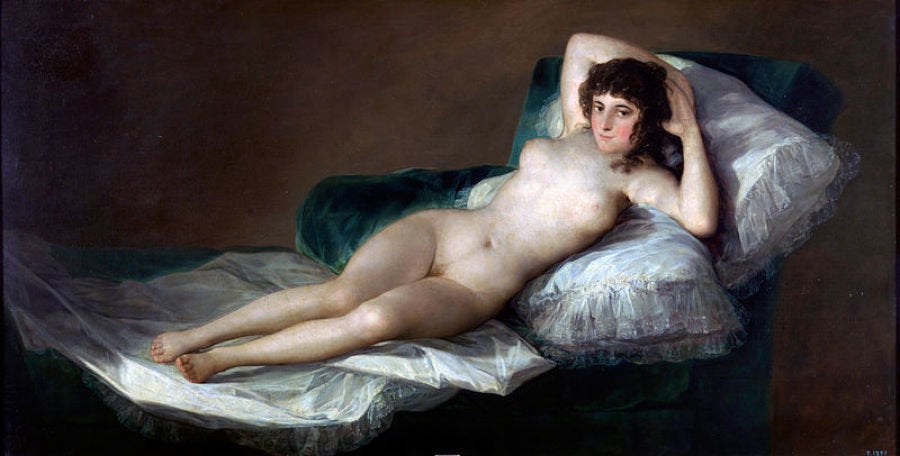Stephen Colbert doesn't know a lot about art, but he's devoted six minutes of his show this week to analyzing the difference between it and porn.
As you might have heard, a famous nude painting by Italian artist Amedeo Modigliani sold for $170 million at Christie's auction. Some people guffawed at the price tag attached to an early 20th century artwork, others just blushed at the naked female body contained within Modigliani's frame.
Take, for example, Bloomberg news. During a broadcast segment on Tuesday, Bloomberg censored the painting, blurring the areas of the painting depicting breasts and pubic hair. "Too racy!" the anchors exclaimed, a little embarrassed by the painterly brazenness of "Reclining Nude." Bloomberg seems to have mimicked the puritanical ways of Fox -- remember when that outlet censored the record-breaking sale of Picasso's "Women of Algiers"? But why?
"I don't really know why they did that," Colbert mused in his own segment. He then goes on to cheekily educate his audience as to which artworks CBS arbitrarily allows him to show. These include: a floral painting by Georgia O'Keeffe, "The Birth of Venus," and two seconds worth of a distant shot of Michelangelo's "David."
Modigliani's nude is not allowed. Neither is Colbert's crude drawing of boobs. And we're not exactly made privy to any explanations behind the decisions.
The arbitrary nature of art censorship isn't confined to television. Instagram censored artist Rupi Kaur's "period photo," claiming that it violated community guidelines, yet the same platform allows for a litany of pornographic images found under the simple hashtag #girls. Facebook really didn't like it when a teacher attempted to share a photo of Gustave Courbet’s "L’Origine du Monde," despite claiming in statements that "photos of paintings, sculptures and other art that depicts nude figures are [fine]."
For more on this issue, you can always read art critic Jerry Saltz's "I Got Kicked Off of Facebook for Posting Images of Medieval Art." Bottom line: old and new media still don't know what to do with nude art. To be frank, we -- the HuffPost Arts & Culture editors -- often have to slap overly cautious NSFW modifiers on articles that contain "racy" art, largely because our posts will end up on platforms like Facebook and Twitter.
Colbert's sobering take on this ambiguity? "Until all this controversy over what's too racy to be considered art is settled, I should probably just play it safe and stick with what's allowed on network TV: police procedurals where they stack up dead hookers like cordwood."
Also on HuffPost:

